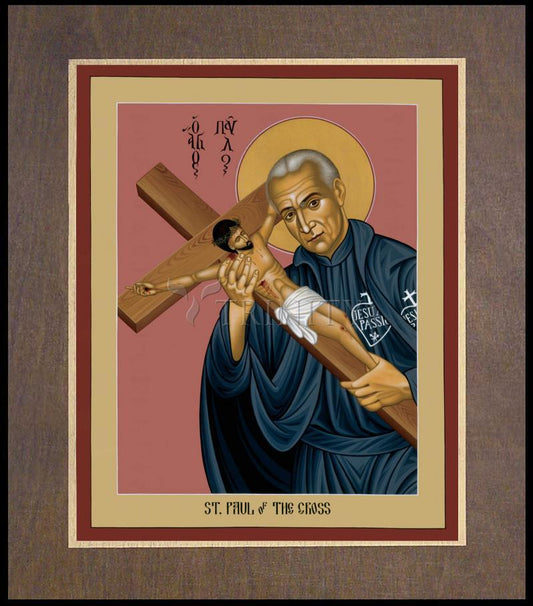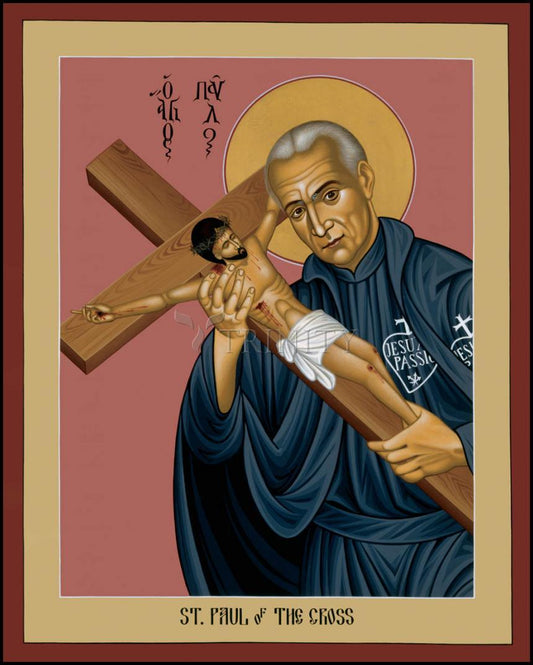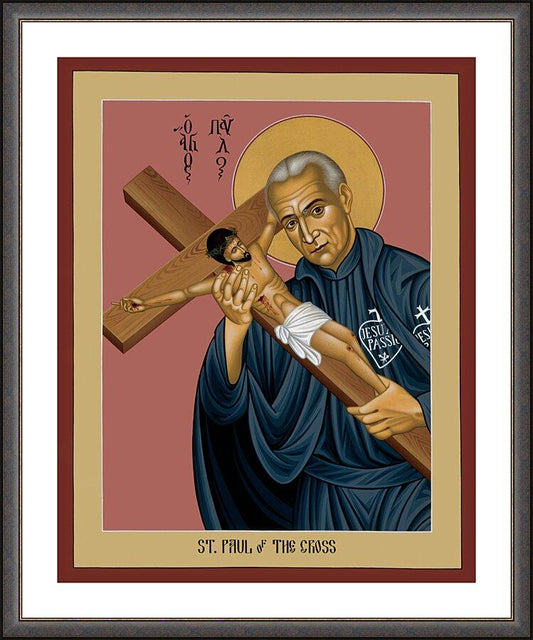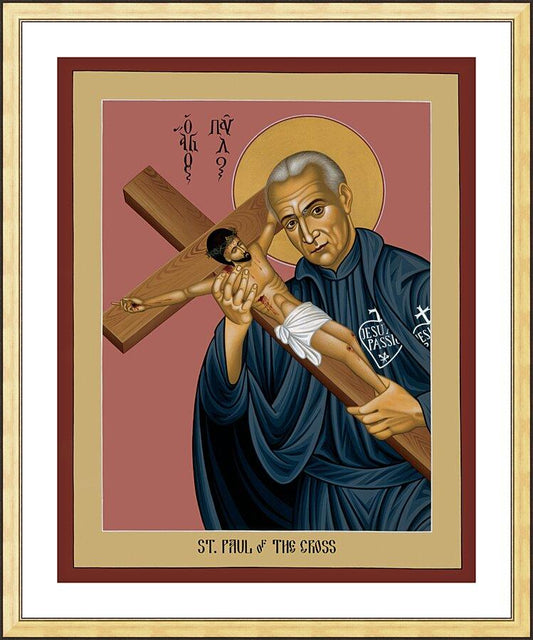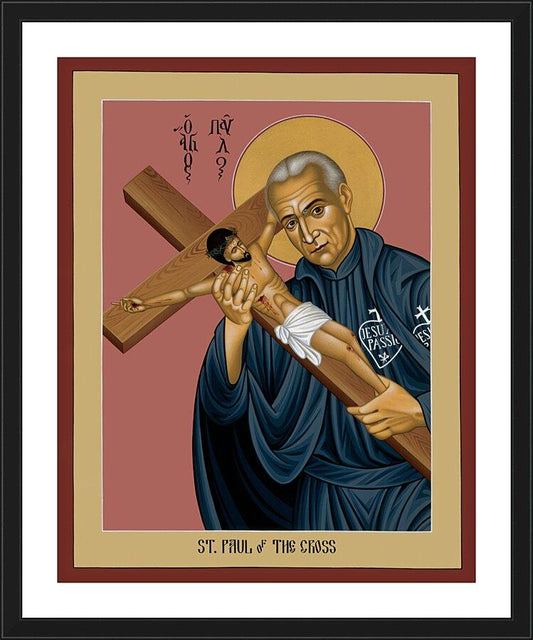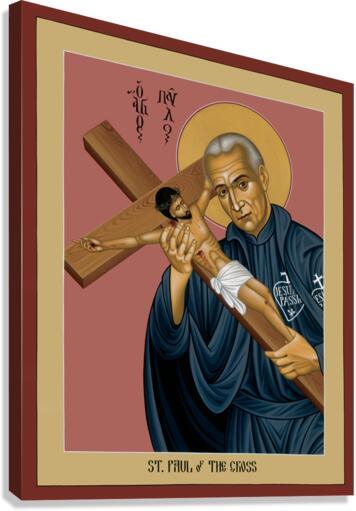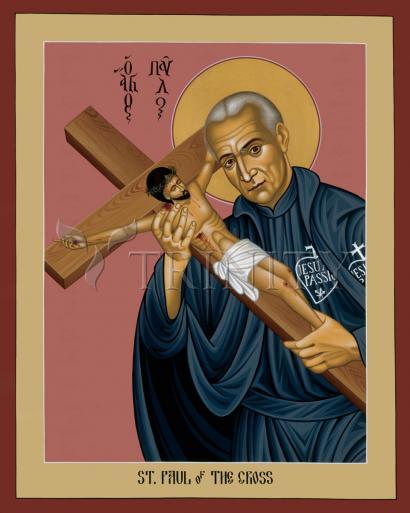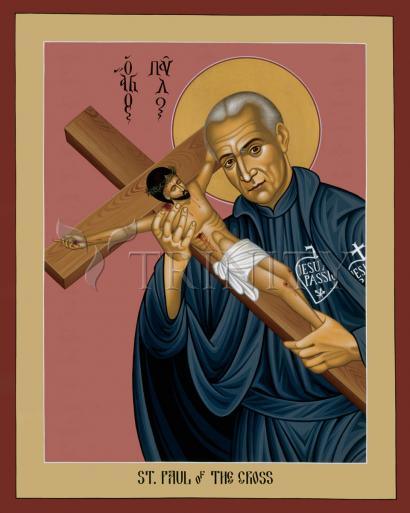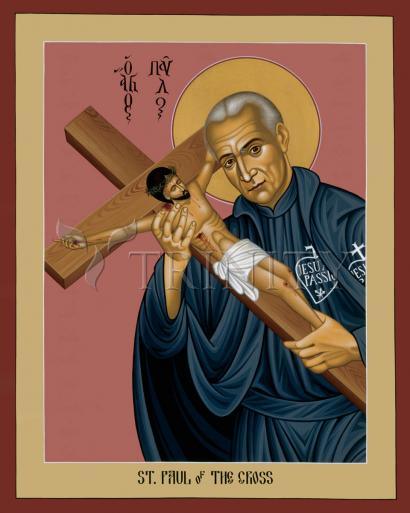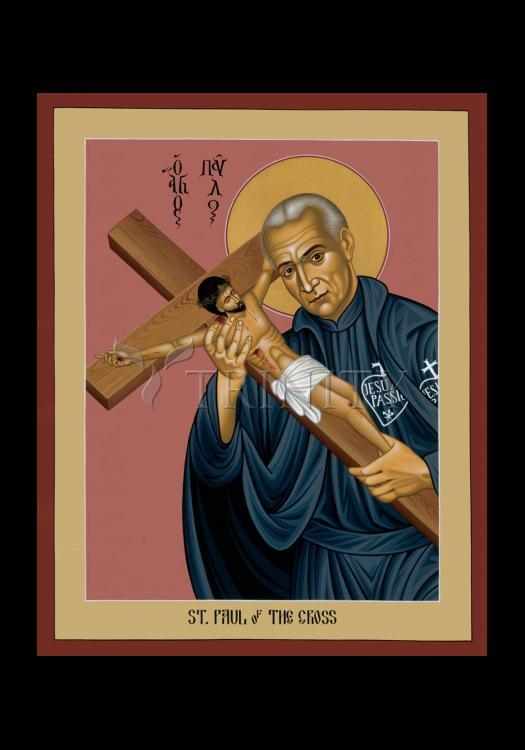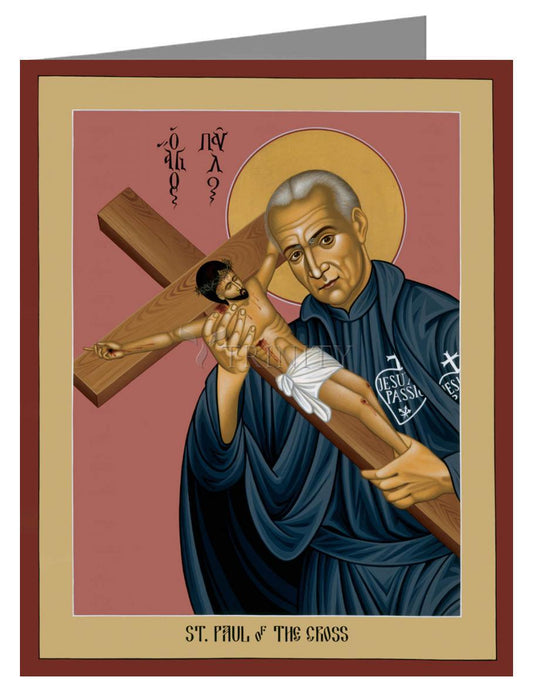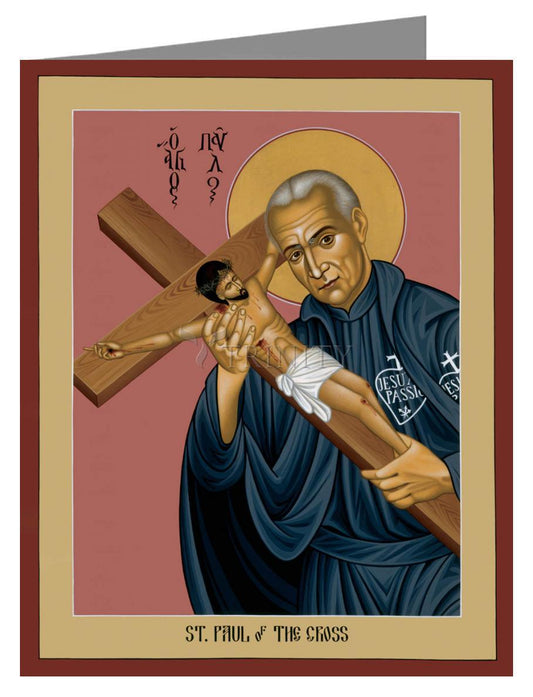His parents, Luke Danei and Anna Maria Massari, were exemplary Catholics. From his earliest years the crucifix was his book, and the Crucified his model. Paul received his early education from a priest who kept a school for boys, in Cremolino, Lombardy. He made great progress in study and virtue; spent much time m prayer, heard daily Mass, frequently received the Sacraments, faithfully attended to his school duties, and gave his spare time to reading good books and visiting the churches, where he spent much time before the Blessed Sacrament, to which he had an ardent devotion.
At the age of fifteen he left school and returned to his home at Castellazzo, and from this time his life was full of trials. In early manhood he renounced the offer of an honorable marriage; also a good inheritance left him by an uncle who was a priest. He kept for himself only the priest's Breviary.
Inflamed with a desire for God's glory he formed the idea of instituting a religious order in of the Passion. Vested in a black tunic by the Bishop of Alessandria, his director, bearing the emblem of our Lord's Passion, barefooted, and bareheaded, he retired to a narrow cell where he drew up the Rules of the new congregation according to the plan made known to him in a vision, which he relates in the introduction to the original copy of the Rules.
After the approbation of the Rules and the institute the first general chapter was held at the Retreat of the Presentation on Mount Argentaro on 10 April, 1747. At this chapter, St. Paul, against his wishes, was unanimously elected first superior general, which office he held until the day of his death. In all virtues and in the observance of regular discipline, he became a model to his companions. "Although continually occupied with the cares of governing his religious society, and of founding everywhere new houses for it, yet he never left off preaching the word of God, burning as he did with a wondrous desire for the salvation of souls." (Brief of Pius IX for St. Paul's Beatification, 1 Oct., 1852)
Sacred missions were instituted and numerous conversions were made. He was untiring in his Apostolic labors and never, even to his last hour, remitted anything of his austere manner of life, finally succumbing to a severe illness, worn out as much by his austerities as by old age.
Among the distinguished associates of St. Paul in the formation and extension of the congregation were: John Baptist, his younger brother and constant companion from childhood, who shared all his labors and sufferings and equaled him in the practice of virtue; Father Mark Aurelius (Pastorelli), Father Thomas Struzzieri (subsequently Bishop of Amelia and afterwards of Todi), and Father Fulgentius of Jesus, all remarkable for learning, piety, and missionary zeal; Venerable Strambi, Bishop of Macerata and Tolentino, his biographer.
Constant personal union with the Cross and Passion of our Lord was the prominent feature of St. Paul's sanctity. But devotion to the Passion did not stand alone, for he carried to a heroic degree all the other virtues of a Christian life. Numerous miracles, besides those special ones brought forward at his beatification and canonization, attested the favor he enjoyed with God. Miracles of grace abounded, as witnessed in the conversion of sinners seemingly hardened and hopeless. For fifty years he prayed for the conversion of England, and left the devotion as a legacy to his sons. The body of St. Paul lies in the Basilica of Sts. John and Paul, Rome.
The fame of his sanctity, which had spread far and wide in Italy during his life, increased after his death and spread into all countries. Great devotion to him is practiced by the faithful wherever Passionists are established.
Born: January 3, 1694 at Ovada, Piedmont (northern Italy) as Paolo Francesco Danei
Died: October 18, 1775 at Rome, Italy
Canonized: June 29, 1867 by Pope Pius IX
Reading:
It is very good and holy to consider the passion of our Lord, and to meditate on it, for by this sacred path we reach union with God. In this most holy school we learn true wisdom, for it was there that all the saints learned it.
Therefore, be constant in practicing every virtue, and especially in imitating the patience of our dear Jesus, for this is the summit of pure love. Live in such a way that all may know that you bear outwardly as well as inwardly the image of Christ crucified, the model of all gentleness and mercy. For if a man is united inwardly with the Son of the living God, he also bears his likeness outwardly by his continual practice of heroic goodness, and especially through a patience reinforced by courage, which does not complain either secretly or in public. Conceal yourselves in Jesus crucified, and hope for nothing except that all men be thoroughly converted to his will.
"Excerpts from a letter by Saint Paul of the Cross



